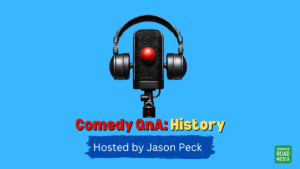You’re in a room, giving a presentation that you know like the back of your hand, everything’s going well. And then the sun sets… and sunlight pours through the window and washes out your PowerPoint presentation. Argh! What to do? Draw the blinds! WHAT? There are NO BLINDS? Egad, now what?
I saw something similar happen quite recently. First off I’d have to say there’s a lot to be said about prevention. If you’re going to be giving a talk mid-afternoon you should know when that selfish sun is due to set and if there is anyway round it.
Seems tiny, but we need to really think situations like this through. Perhaps you should consider the following:
1) Have someone fix the blinds and then draw them? In some Governmental or public sector companies (certainly in the U.K.) this is easier said than done. I was working in an office job once and my printer broke. I had a look, pulled it apart a bit and still nothing. I contacted I.T. and was given an estimated time of 5 working days to fix it. So what was going to happen to all those letters I had to print off? So my advice? Put an order in early! Waaay before the presentation’s due.
2) Put up a black curtain. Black is best obviously, but not always easy yo get hold of. A lot easier if you’re in a drama studio. In, say, a hospital… not so much. Any heavy cloth or material could work, the darker the better.
3) If all else fails… move. No note countries, although you may feel like that. Can you re-organise the room layout (in advance of your audience showing up) that would prevent such a situation? The sun can get on with its job of setting, and you can get on with yours of presenting.
4) Ditch the PowerPoint! Just because you have one doesn’t mean to say you need to use it. Just talk to your audience and inform them of what they need to know. Too many people use PowerPoint as an information dump and a crutch. STOP doing that. It’s a visual AID.
Seating Arrangement
Moving on from the cosmic battles, ideally you should make sure your audience is seated effectively. I’ve written about this elsewhere on this blog, but it can’t hurt to restate it here. make sure they’re in rows, facing one direction. With or without an aisle. This is also one of the best ways to make sure that your audience laughs. Obviously this won’t happen spontaneously, but once you “do the funny” the audience will laugh and it will be contagious. People sat next to people who are laughing will laugh too.
If they’re spread out in a semi-circle, it’s a lot harder. It can work, but its an uphill struggle. So why do that to yourself? Depnding on the nature of the event, cabaret style (small tables with chairs around them) can work too. But for a business presentation, or an induction, or a training of some sort theatre style seating works best.
If you do have an aisle, don’t walk down the middle of it and deliver your entire presentation from there. How is the front row supposed to see you? Cranking themselves round? This won’t happen. If it does, they won’t do it for long. I’ve been at a training session where I’ve done exactly that… not watched the guy. He said he knew it all and knew what he was doing. But he lost the interest first two rows of the audience. Not good.
Lighting
If you can avoid putting the room into darkness then you can avoid people falling asleep. Although, as I have recently discovered, if someone’s going to fall asleep, they’re going to fall asleep. But why not try to stack the odds in your favour? If the lights go off, then the tendancy for a quick “grandad snooze” increases.
You might be thinking “people don’t fall asleep in the cinema”. True, but if you’re watching a movie in central London you’ve paid about £12 for the privelge you will stay awake to get your money’s worth. Unless its utter pants. Then you’ve always got your popcorn to cry into.
But with a business presentation, they haven’t paid to see you. Often people in the audience have to be there, rather than really want to be there. So keep the lights on if you can. If anything it might be advisable to dim the front section, where you are, so that the screen’s easier to see. If not, well then you’ll just have to work without the PowerPoint slides.
Sound
Depending on the size of the room you’ll probably have to use a lapel mike or a wireless mike of some sort. Please, please, please do a sound check. For me. And if you don’t already know, have a quick chat with the tech guy to find out how to switch it on and off.
However, if you’re working in a small room, then you probably won’t need sound equipment. What I would do is to get a colleague to sit in different seats and have them tell you whether or not they can hear you. Can you be heard at the back of the room for those delegates who are unable to get a seat and have to stand at the back?
If you’re using video or music in your presentation, check the levels of that too. Don’t assume that the levels are fine. We all know what assuming does. Find out how that works in case you need to turn it up or down when the tech guy leaves.
Room Temperature
Make sure, if you can, that the room’s not too cold or too hot. I have been in an audience and I have experienced both. I have also performed on a comedy club stage that was far too hot. Not much could be done about that, but you can often make sure the temperature of the room that you’re presenting in is good. If you can make it just a tad cooler, this could help stave off the audience getting sleepy. Plus, the lights and other electrical equipment will help heat things up any way.




2 comments
That deadly combination of early afternoon speech, dimmed lights and a hot room make for a lethal combination for any speaker. Excellent advice to note.
Peter
Effective Public Speaking
Author
Hey Peter,
Thanks for the comment. Yes, always best to try and avoid the post-lunch “food coma” if possible.
Cheers